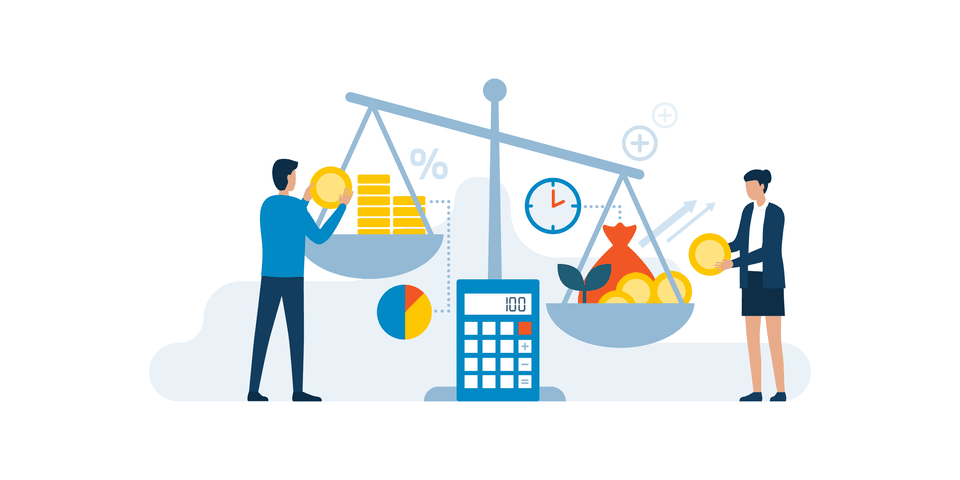
Once you have a completed, https://www.bookstime.com/ in front of you, creating the three major financial statements—the balance sheet, the cash flow statement and the income statement—is fairly straightforward. At this point you might be wondering what the big deal is with trial balances. Did we really go through all that trouble just to make sure that all of the debits and credits in your books balance? You’re now set up to make financial statements, which is a big deal. The trial balance is a list of all your business’ ledger accounts, and how much each of those accounts changed over a particular period of time.
What are the three trial balances?
- As an added bonus, QuickBooks Premier and Enterprise also include industry-specific features designed for nonprofits, manufacturing, or retail businesses.
- Once we add the $4,665 to the credit side of the balance sheet column, the two columns equal $30,140.
- To get the $10,100 credit balance in the adjusted trial balance column requires adding together both credits in the trial balance and adjustment columns (9,500 + 600).
- However, it is the source document if you are manually compiling financial statements.
- But outside of the accounting department, why is the adjusted trial balance important to the rest of the organization?
- The statement of retained earnings always leads with beginning retained earnings.
Once the trial balance information is on the worksheet, the nextstep is to fill in the adjusting information from the postedadjusted journal entries. Sage 50cloudaccounting offers both a summary and detailed trial balance report, along with a comparative trial balance that allows you to compare trial balance totals for two periods. There are also net changes for the period trial balance report that provides a good view of all changes made during an accounting period. Applying all of these adjusting entries turns your unadjusted trial balance into an adjusted trial balance. If the sum of the debit entries in a trial balance (in this case, $36,660) doesn’t equal the sum of the credits (also $36,660), that means there’s been an error in either the recording of the journal entries.
How to Prepare an Adjusted Trial Balance
If we go back and look at the trial balance for PrintingPlus, we see that the trial balance shows debits and credits equalto $34,000. An adjusted trial balance is prepared by creating a series of journal entries that are designed to account for any transactions that have not yet been completed. Just like in an unadjusted trial balance, the total debits and credits in an adjusted trial balance must equal. The adjusted trial balance is what you get when you take all of the adjusting entries from the previous step and apply them to the unadjusted trial balance. It should look exactly like your unadjusted trial balance, save for any deferrals, accruals, missing transactions or tax adjustments you made.
Record all transactions

The balance sheet is the third statement prepared after thestatement of retained earnings and lists what the organization owns(assets), what it owes(liabilities), and what theshareholders control (equity) on aspecific date. Remember that the balance sheet represents theaccounting equation, where assets equal liabilities plusstockholders’ equity. Companies can use a trial balance to keep track of their financial position, and so they may prepare several different types of trial balance throughout the financial year. A trial balance may contain all the major accounting items, including assets, liabilities, equity, revenues, expenses, gains, and losses. Likewise, while the adjusted trial balance is used as the basis for the preparation of financial statements, the unadjusted trial balance usually cannot be used for such purpose.
If you’re using a dedicated bookkeeping system, all of this work is being done for you in the backend. It will create a ledger of all your transactions and turn them into financial statements for you. It’s hard to understand exactly what a trial balance is without understanding double-entry accounting jargon like “debits” and “credits,” so let’s go over that next. After the preparation of the trial balance, there were a few more adjusting entries. A trial balance is so called because it provides a test of a fundamental aspect of a set of books, but is not a full audit of them.
- Even though they are the same numbers in the accounts, the totals on the worksheet and the totals on the balance sheet will be different because of the different presentation methods.
- It is a record of day-to-day transactions and can be used to balance a ledger by adjusting entries.
- Such a method is a quick way to prepare adjusted TB as only a few adjustments need to be made.
- In the above example, unrecorded liability related to unpaid salaries and unrecorded revenue amount has been included in the adjusted trial balance.
- To get the numbers in these columns, you take the number in the trial balance column and add or subtract any number found in the adjustment column.
- If you look in the balance sheet columns, we do have the new,up-to-date retained earnings, but it is spread out through twonumbers.
- Since you’re making two entries, be sure to double-check the debits and credits don’t apply to the wrong account.
IFRS Connection
Looking at the asset section of the balance sheet, AccumulatedDepreciation–Equipment is included as a contra asset account toequipment. The accumulated depreciation ($75) is taken away fromthe original cost of the equipment ($3,500) to show the book valueof equipment ($3,425). The accounting equation is balanced, asshown on the balance sheet, because total assets equal $29,965 asdo the total liabilities and stockholders’ equity.
IFRS CONNECTION
Financial statements give a glimpse into the operations of a company, and investors, lenders, owners, and others rely on the accuracy of this information when making future investing, lending, and growth decisions. When one of these statements is inaccurate, the financial implications are great. Financial statements give a glimpse into the operations of acompany, and investors, lenders, owners, and others rely on theaccuracy of this information when making future investing, lending,and growth decisions. When one of these statements is inaccurate,the financial implications are great.
Run an unadjusted trial balance

After the accounts are analyzed, the trial balance can be posted to the accounting worksheet and adjusting journal entries can be prepared. The key difference between a trial balance and a balance sheet is one of scope. A balance sheet records not only the closing balances of accounts within a company but also the assets, liabilities, and equity of the company. It is usually released to the public, rather than just being used internally, and requires the signature of an auditor to be regarded as trustworthy. Ensuring the adjusted trial balance report is presented in a clear, organized way will make it easier for you when it comes to preparing your financial statements at the end of the year. There are many types of software to explore, which can be used to prepare an adjusted trial balance.
